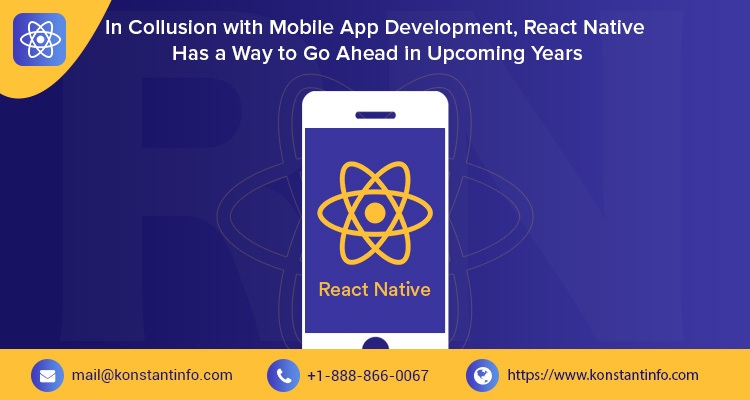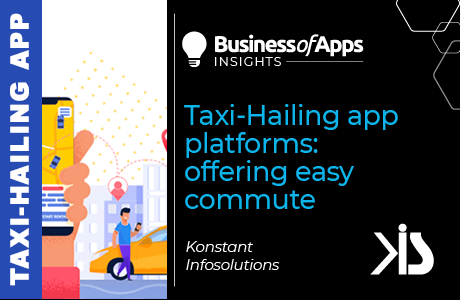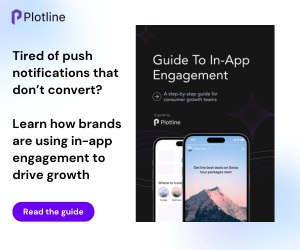With an occasional dip in Objective C or Java, React Native holds the approval of sharing code across platforms, baking strong developer tools and device features as an added fillip.
If research reports (Statista) are to be believed, the mobile app market is going to generate nearly 189-190 billion US Dollars in coming years (by 2010 in specific). There has been an increase in the number of smartphone users and a subsequent increase in iOS and Android applications in the last few years. Although there were no substantial developments in React Native in past few years, still things have been turning swiftly as a respite for mobile users and paving way for successful React Native applications.
Status of React Native
Focusing on large-scale Agile design and Architecture (large scale re-architecture), React will continue working on the team’s long-term vision of writing natively rendering mobile applications for iOS and Android in open source. React Native has now become the fourteenth most starred project of all time on GitHub.
React Native works on the fact that the most popular mobile properties are mainly accessed via mobile apps instead of mobile browsers. It has given some of the most successful applications like Facebook, Facebook messenger, and YouTube etc. which are very popular amongst the audience.
Top Mobile Apps to React Native In 2018
- Facebook Ads
- Facebook Analytics
- Walmart
- Bloomberg
- Soundcloud Pulse
- Townske City Guides
- Gyroscope
- Gyroscope Health
- Wix
- Delivery.com
- Uber Eats
- Tesla
- Skype
- Discord
- Tencent QQ
- Salesforce
- F8
- Grasshopper
- Unacademy
- 2048
- CBS Sports Franchise Football
- Vogue
- Discovery VR
- KFC
- Chop
- Adidas Glitch
- Myntra
- Artsy
- Money Lion
- Hive
- Airbnb
Related Article: Hear! Hear! How Native React Gives Essential Makeover to Hybrid App Development?
What to expect from React Native App Development in the future?
Developers are not interested in investing time and efforts on a technology which they think will become obsolete in near future. React Native can become an enormously powerful tool in years to come.
A healthy GitHub Repository:
React Native comes with a healthy Github repository, stable API’s, a vibrant eco-system and excellent documentation. React Native has to accomplish various issues and pull requests within a reasonable time period. It comes with increased test coverage. It envisions to commit sync out Facebook code repository and open source tests. It also has a higher scale of meaningful community contributions.
Stable API’s:
The set of API’s that come along with makes it easier to gel open source dependencies. Facebook makes use of same public API’s as open source. Every subsequent release of React Native follows semantic versioning.
Huge Platform Support:
React Native comes with high-quality ViewManagers and native modules maintained by the community.
Leaner Code:
React native will come with an even leaner code by removing non-core and unused components, thus reducing the surface area and managing subsequent contributions to react native.
React Native team is working on WebView and workflows, which enables internal teams to continue working with components after they are removed from the repository.
Updated Tooling and Open Sourcing Internals:
Facebook is soon going to release some new internal tools popular with the open source community. This project list includes: Open source JSI and will also enable the community to bring their own JavaScript VMs, replacing the existing JavaScriptCore from React Native’s initial release. Additionally, RN will support 64-bit libraries on Android. It will enable debugging under the new architecture. Moreover, React Native will have improved support for Gradle, CocoaPods, Maven and Xcode architectures.
Decent Testing Infrastructure:
The code is published by Facebook only after testing if it breaks in the middle (from making it open source) that are supporting it with their internal tests.
Public API:
Facebook has decided to retain React Native via public API, in just the same way as open source does to avoid any unintentional breaking changes.
Communication:
React Native has given a thought to bring back auto-generated API reference docs, create additional content focussed on creating quality user experiences and improve the release notes.
Updated Documentation:
Up-to-date API reference docs ensure users focus on creating high-quality experiences.
Concise Summary
One of the most awaited projects for RN is to continue working on a large-scale re-architecture to make the framework more flexible and integrate better with native infrastructure in hybrid JavaScript or native apps.
Since specific dates for React Native developments are not yet mentioned, the above-mentioned projects are likely to arrive throughout next year as each one of these will be taking some time to finish. Calling synchronously into JavaScript, incorporating async rendering, simplifying the bridge between native and JavaScript – will carry the task to build cross-platform apps a long ahead.












